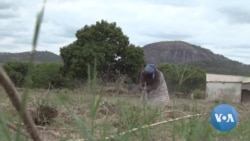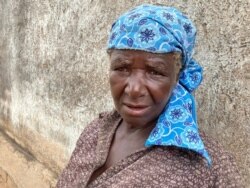HARARE — The United Nations World Food Program says it is struggling to raise more than $200 million to ease food insecurity in Zimbabwe. Economic collapse and recurring droughts in the country — once the breadbasket of southern Africa — have left 5.5 million people without enough to eat.
Maria Gunzi, a 66-year-old widow, farms her land, but worries she will not have enough food to last until the next harvest.
"Hunger and poverty are real here, I do not even have fertilizer for the land I am preparing," she said. "All my crops were burnt by the sun last season and there is no food aid coming. These wild fruits are not getting buyers, people are broke. I wish the government would chip in with assistance, especially for us, the old. Hunger is giving me a real headache."
Gunzi is among the 5.5 million people in Zimbabwe who are food insecure until at least next April, because of the collapsed economy and recurring droughts, according to the World Food Program.
"For us, we look at the severity of the (economic) situation, and coupled with the fact that the forecast for the 2019/2020 agricultural season is also not good, it is almost similar to last year's forecast," said Eddie Rowe, director of World Food Program in Zimbabwe. "We reckon that we will be in for a long run."
WFP says it sometimes imports food from Zambia to aid Zimbabwe, but the drought-damaged Zambia has imposed a ban on corn exports.
"We are running against time. We need these commodities by January," Rowe said. "For us to implement this program at scale, reaching 4.1 million, from January up to April, and then 1.5 million May and June, it would cost us a total of $293 million. We have only received 30 percent of that. Meaning that we have a funding gap of $211 million."
The WFP official maintains hope that international donors will assist Zimbabwe, though he knows the country is competing for funds with emergency situations in war-torn places such as Yemen, Sudan and Somalia.
But any aid would be a relief to Maria Gunzi, who says climate change has affected her, as she used to be able to fend for herself.










